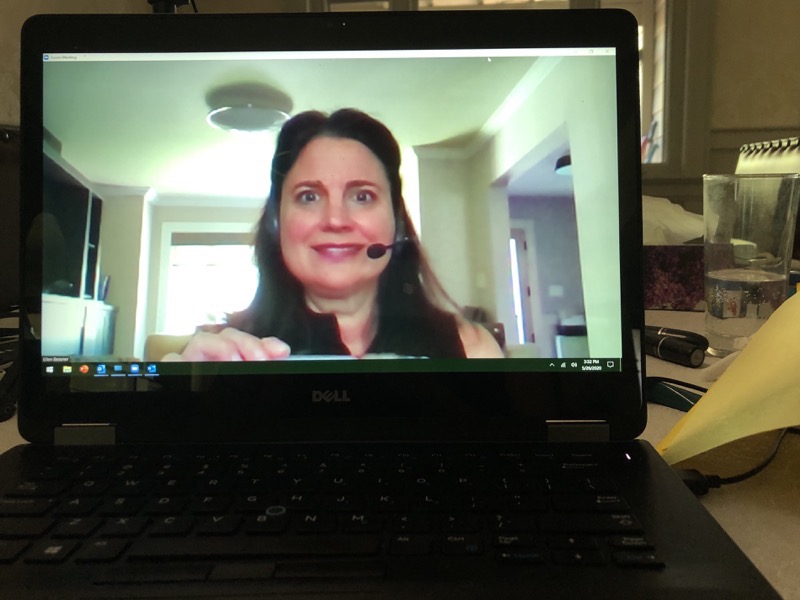
Until last week, I had never spoken live at a virtual video conference (I had done many audio interviews, but that’s different). I learned long ago that I prefer to see the audience when I’m presenting. That’s why I try to avoid podiums and bright lights, which distance and blind me, preventing me from connecting with my audience. Instead, I walk the room and look into the eyes of the people in attendance.
An online video conference would be different, taking me out of my comfort zone. I was nervous.
There were over 1,000 people registered for my online presentation. Doubts flooded my mind. Could I perform as well while staring into the little camera of my laptop, not being able to read my audience? Could I quip a few off-the-cuff jokes, as I normally do in live conferences? How could I be sure my jokes wouldn’t offend, especially during Covid? And what about my vanity — how could I not look as terrible as I see myself on my work video-conference calls?
I did what I normally do when I am nervous — I did some research and spoke to my mentors, many of whom had already given online video conferences. I took their advice about how to adjust my lighting, PowerPoint and client engagement (Rhitu Bhasin), my camera angle, sound and lighting (Jeff Bessner) and my voice and energy (Marisa Murray). I practised out loud in front of the laptop camera, and off I went!
The presentation was 45 minutes of me talking into the camera and 15 minutes of Q&A. After the 45 minutes, I was heartened to learn from the moderator that I received over 60 questions from the attendees, the most of any presenter in the two-day conference. From that, I gathered the audience was engaged!
One of the questions I was asked was, as a litigation lawyer defending advisors, what are the most common infractions that get advisors into trouble? My long-winded answer was aptly summarized by the excellent moderator, David Bullock, as the three S’s: suitability, sloppiness and screw-ups.
The explanation I provided is that in litigation, clients need to have a legal basis for their claims (called a “cause of action”). Over 90% of claims are grounded in the allegation that a client’s investments were unsuitable; i.e., the client’s account contained investments or insurance products that were too risky or otherwise inappropriate for the client.
The most common regulatory infractions are sloppiness with paperwork and screw-ups. These result from an advisor either not knowing or forgetting the regulations or internal company policies, or an advisor not realizing that the steps they were taking would be a violation of one or more of these regulations.
The main purpose for me in writing my two books and all my articles, as well as my speaking engagements, is to prevent advisors from making mistakes that can get them into trouble. I wish that I could be perched on your shoulder so that each time you were about to commit one of the three S’s, I could shake you and direct you down a path that would protect you and your business. I actually have an image in my head of me perched on your shoulder so you maintain an awareness of your risk before it’s too late.
As we (hopefully) near the end of isolation in our homes and enter a new normal, I see certain main risks to advisors. In my next article, I will lay these out for you so that you can begin to prepare for what may lie ahead to further reduce your risk and build your business.
